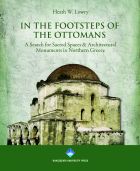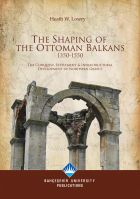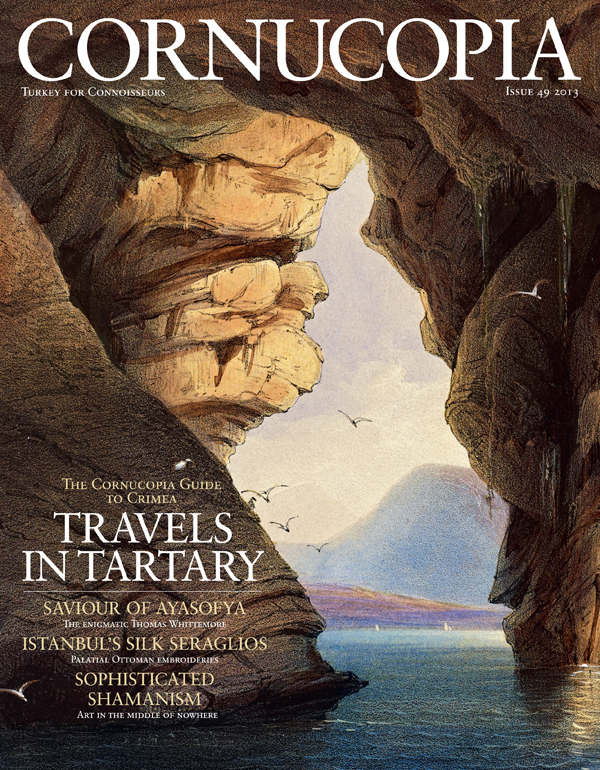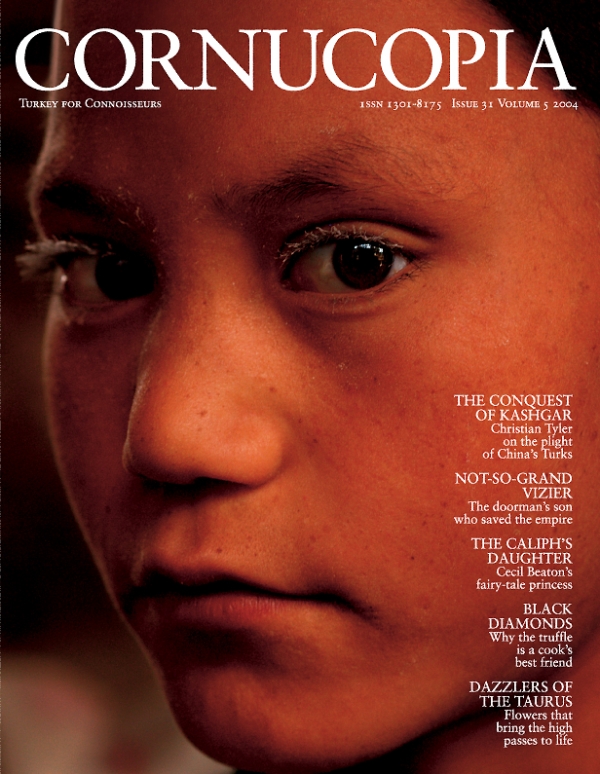Buy or gift a stand-alone digital subscription and get unlimited access to dozens of back issues for just £18.99 / $18.99 a year.
Please register at www.exacteditions.com/digital/cornucopia with your subscriber account number or contact subscriptions@cornucopia.net
Buy a digital subscription Go to the Digital EditionAbandoned in Greece at the end of the Ottoman Empire, the Turks of Thrace cling defiantly to their old ways. By Owen Matthews. Photographs by Ashley Gilbertson
Western Thrace is a land which has been washed up by the tides of empire. The rolling hills and cornfields that stretch between Salonika and Constantinople were once one of the heartlands of Byzantium, the place where the trading routes of the Balkans converged on the great seaports of the eastern Mediterranean. The land was rich in grain, horses and men, and the Thracian plains above Constantinople itself were the scene of the empire’s most titanic struggles with barbarian invaders.
Now, as though taking a rest from its turbulent centuries at the centre of the action, Thrace has become a backwater, a borderland split between the two old enemies, Greece and Turkey. And like many remote borderlands, it is pervaded with the feeling that life is elsewhere, somewhere across the frontier, or down the autobahn to the bright lights of modern Thessaloniki or Istanbul. For decades official Athens disdained this distant outpost, and Turks did little for their part of Thrace except clutter its charmless shoreline with rows of concrete Legoland holiday homes.
Thrace is Turkey’s only border with the EU – but at the same time its border with an implacable historic enemy. You can see from the road that neither side can quite make up its mind what do to with the place – there are stretches of lavishly funded highway that dwindle to a two-lane country road winding through hedges and coppices that look like rural England. But the isolation of this northeastern finger of Greece has helped to preserve a remarkable piece of human heritage. Thrace is home to some of the last surviving Turkish communities of the Ottoman commonwealth, left behind as the empire contracted convulsively through the Balkans between 1912 and 1924. There are around 130,000 Turks left in Western Thrace, centred in and around the towns of Gümülcine (Komatini in Greek), Iskeçe (Xanthi) and Dedeağaç (Alexandropouli).
In modern times the wealth of Thrace came from its tobacco, one of the Ottoman Empire’s best-known exports. The smoke of the Turkish leaf curled around the salons of nineteenth-century Europe and later reached the New World in the form of Camel cigarettes (“Turkish and American Blend”). The wet, loamy soil of Western Thrace is perfect for its cultivation, and in its heyday the smallholders grew rich on the proceeds of the broad leaves. They built themselves handsome stone townhouses and solid, half-timbered manors, and sponsored by subscription unlovely bits of heavy late-Ottoman municipal architecture such as the clock tower in the main square of Iskeçe.
But by the time the Graeco–Turkish war of 1919–22 came to its traumatic end with the rout of the Greek forces and the burning of Smyrna (modern Izmir), centuries of peaceful cohabitation had been shattered. The inevitable exchange of populations followed, with a million or so Greeks from Anatolia leaving entire villages empty, while hundreds of thousands of Muslims, mostly from Crete, northern Greece and Salonika, birthplace of Mustafa Kemal Atatürk, were evacuated. (Between 1912 and 1927, almost a million Muslim refugees from the Balkans arrived in Turkey.) The only exceptions to the wholesale uprooting were those Greeks in Constantinople designated établi by the drafters of the Lausanne Treaty in their grand lakeside hotel ballroom in the damp of a Swiss spring, and the Turks of Western Thrace.
Since then the Greek government has, at best, largely ignored its Turkish minority, at worst, during the days of the military junta, tried to force them to leave or forget their identity. Prejudice still runs deep. A glossy photo book of the town recently published by Xanthi’s local council carries this version of the area’s identity: “The people who lived in the mountain area, Pomakie, blockaded in the inaccessible mountain chain of Rodopi, became Muslims, especially during the seventeenth century, but preserved many of their customs and traditions.” The subtext is that though they may happen to be Muslims, the people of the area are Greeks under the skin. There may be truth in it – but that doesn’t alter the fact that the local Turks define themselves as such, not as Greek Muslims. That’s unfortunate, because memories of Ottoman occupation still rankle. In another official book’s introduction to Thessaloniki, after a long discourse on the “numerous majestic and glamorous works which display all forms of Byzantine art”, the last half millennium is dismissed with the phrase, “after this illustrious era, the enemies take over”…
The knobbly tubers stay fresh and crisp, and even become sweeter, if they are left in the ground; after frost and snow, they really taste like apples. Nutritionally, the tuber has valuable properties: as a diuretic, it benefits the kidneys; it stimulates the milk of nursing mothers; and it is considered a potent aphrodisiac.
More cookery features
There has been no road map in the life of Josephine Powell. As restless as the nomadic tribes she followed, she has simply let things happen. But along the way, she has become a photographer and an expert on the nomads of Turkey and their textiles. And now she dreams of a permanent home for her exceptional kilims and photographs. Andrew Finkel pays tribute to a remarkable friend
Until 1950, no travellers were permitted to cross the Euphrates. Southeast Turkey was simply out of bounds. Among the first to visit when restrictions were finally lifted was the photographer Cafer Türkmen. Travelling by train, truck, Jeep and mule, he discovered a place of dramatic beauty and a way of life barely changed for thousands of years.
The Hôtel de Lamballe was home to a doomed princess and an asylum for mad artists before it became Turkey’s embassy in Paris. Patricia Daunt reveals the turbulent past behind its serene facade. Photographs by Jean Marie del Moral
Art from Florence and Amsterdam joins the work of a local court painter in Istanbul for two major international exhibitions
The pictures that fired Europe’s imagination with their visions of Istanbul and the Ottoman court returned to the city for the first time in more than 250 years. Philip Mansel looks at the extraordinary paintings of Jean Baptiste Vanmour





Cornucopia works in partnership with the digital publishing platform Exact Editions to offer individual and institutional subscribers unlimited access to a searchable archive of fascinating back issues and every newly published issue. The digital edition of Cornucopia is available cross-platform on web, iOS and Android and offers a comprehensive search function, allowing the title’s cultural content to be delved into at the touch of a button.
Digital Subscription: £18.99 / $18.99 (1 year)
Subscribe now